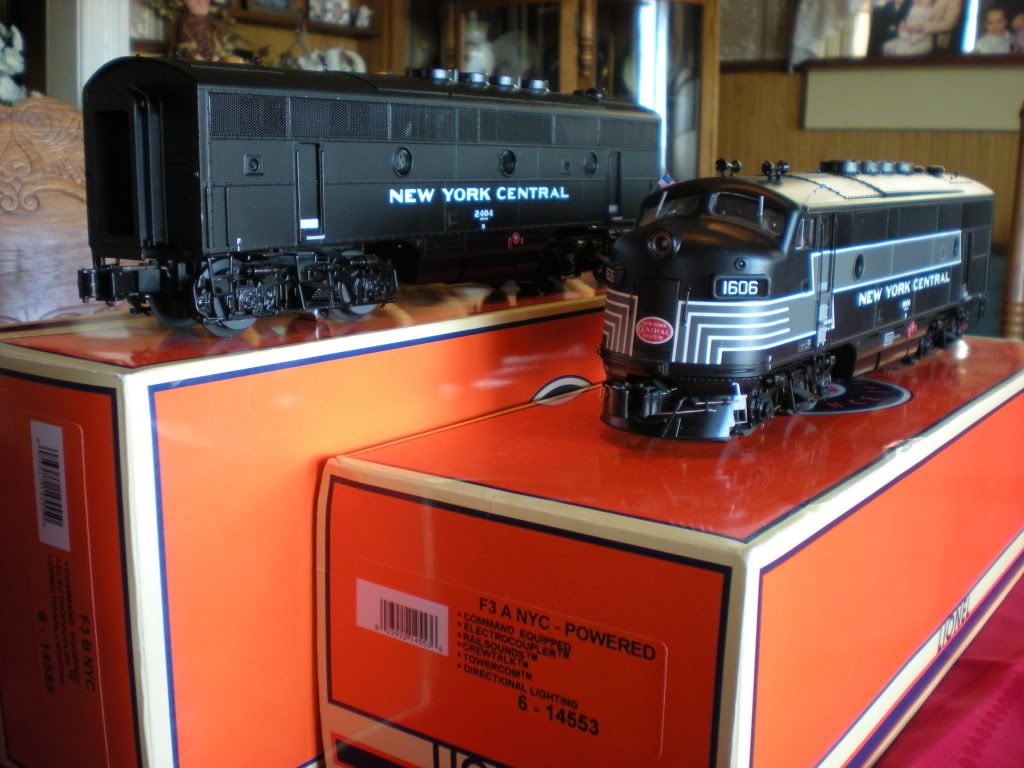I have a question... I've noticed that there has been some FA and F3 models produced with a truncated Lightning Stripe, that end before the end of the car body, just behind the last porthole. Most recently, this is seen on BigE's Lionel scale F3's that he had for sale.

This is different from the "whiskers" that Atlas had on their last run of F2's, and MTH had on the FT's. This had the low whiskers on the nose of the A unit, and just black B units. Seen here at Niagara Hobby.
I thought that the "whiskers" was the first scheme (as delivered) on the FT's, and then the NYC switched to the full body Lighting Stripes on both A and B units for the F3's and F7's, then to the Cigar band on their A units, with back to "dip" black for the B's in 1958.
I also find it curious that the FT and F3, A and B units, are in the same 1600 and 2400 numbering series, respectively.
Did the NYC actually use this truncated lightning stripe, and was it a transitional scheme between the whiskers / Lightning Stripe or from the Lightning Stripe / Cigar Band?
Does anyone know of photos of these short striped units?
Does anyone know of photos of NYC FT units?
They are not on rrpicturearchive.net or railpictures.net...
Thanks,
Mario




